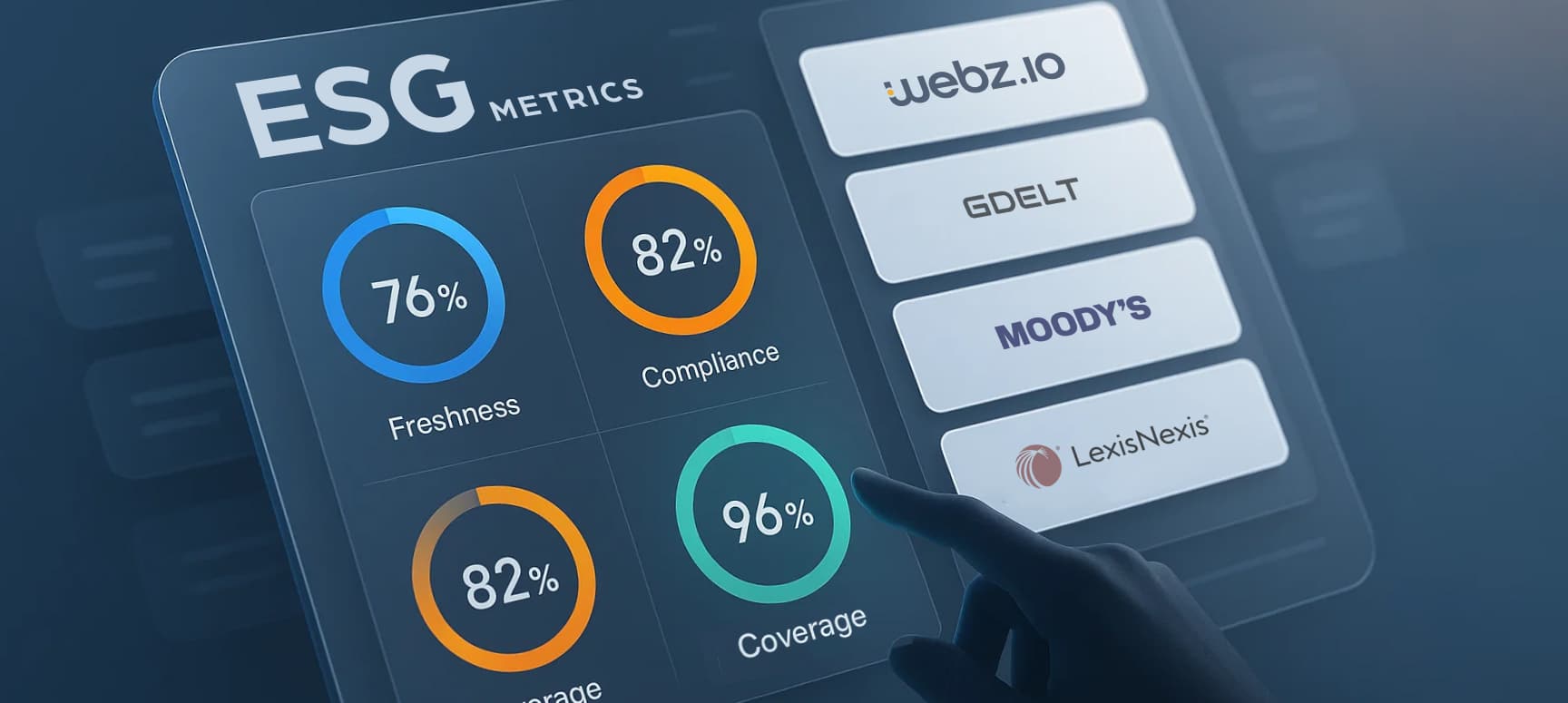The Best Alternative Data APIs for Financial Insight
Initially used quietly by hedge funds, alternative data has since gone mainstream, with real-time news, satellite imagery, and AI-tagged sentiment...
Aylien Closed Down: Webz.io Is Now the Only Web Data API You Need
Aylien’s closure left a gap in the news data market. Many organizations that depended on its feeds faced disruption in...
Beyond Fact-Checking: Navigating the Era of Weaponized Misinformation
Misinformation isn’t just a background risk, it’s a direct threat to the integrity of your insights and the trust of...
Financial Monitoring for External Risk & Data Integrity: A Data Provider’s Checklist
In February 2024, fraudsters leveraged a deepfake audio clip to impersonate a CFO during a routine Zoom call, deceiving a...
Verifying External Business Risks: A Data Provider Checklist
Accurate intelligence starts with trustworthy data. It is also crucial for managing reputational risks. For companies in the risk intelligence...
Free News Dataset vs News API: Which is Right for You?
In countless ways, data is the fuel that drives business today. There are media monitoring and media intelligence solutions that...
Web Data Extraction Guide: Generate Powerful Insights at Scale
We live in a world with an ever-growing wealth of data, much of it available on the open web. Data...
List of Best News APIs in 2025
Over the years, news APIs have become a key source of data for a variety of intelligence platforms from media...
Enhancing Trust in News Data: New Filter for Government and Local Websites
In today’s fast-moving world, where geopolitical tensions, public health threats, and regulatory changes can emerge suddenly and early, trustworthy information...
Webz News API Unveils Newsroom: Filter Newsrooms Trusted Feeds
What's new? We're excited to introduce our latest News API feature designed to enhance trust and credibility in news data:...










